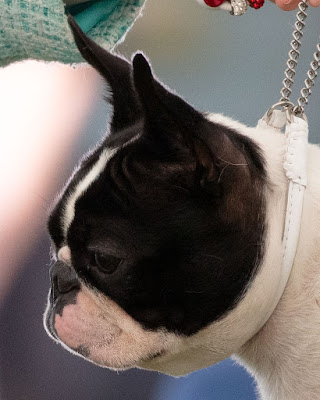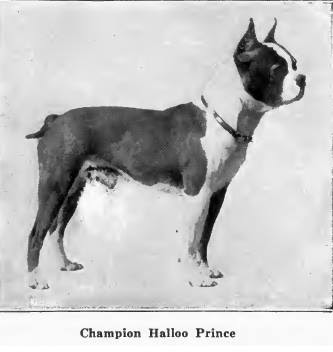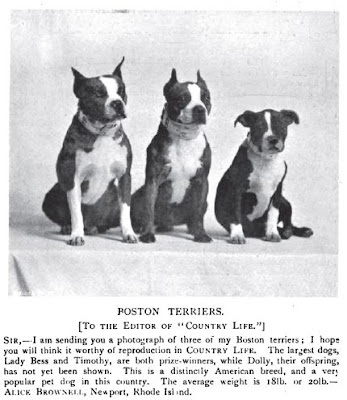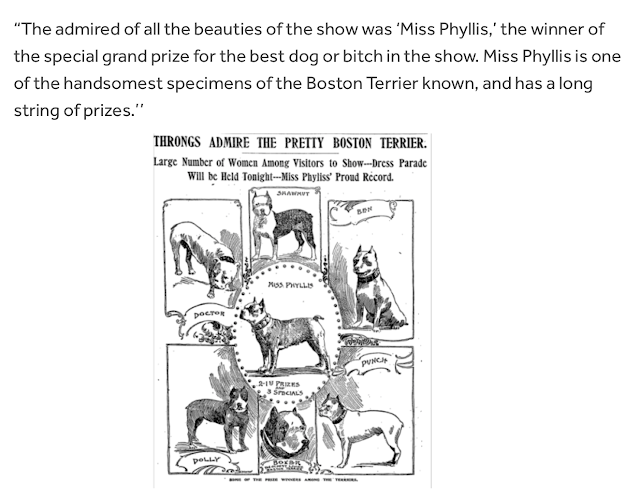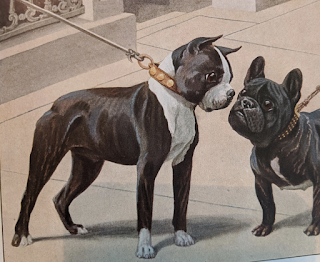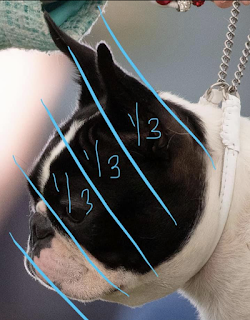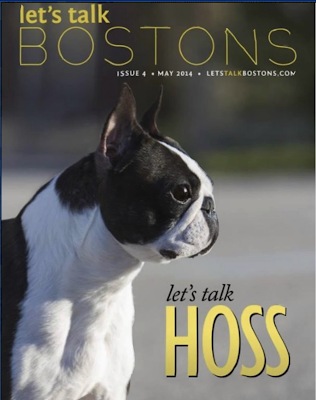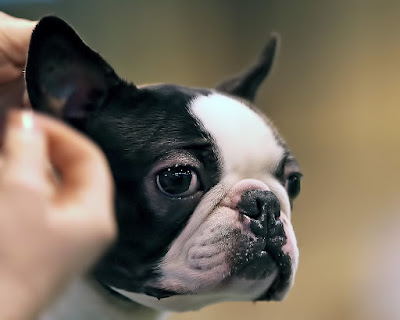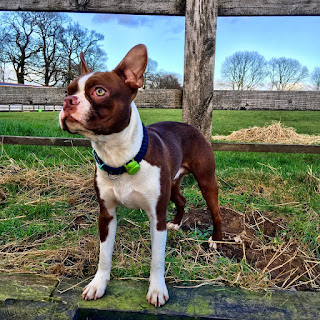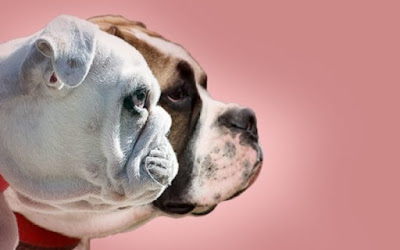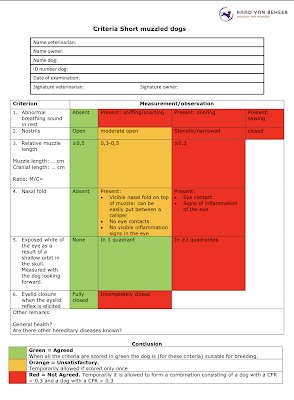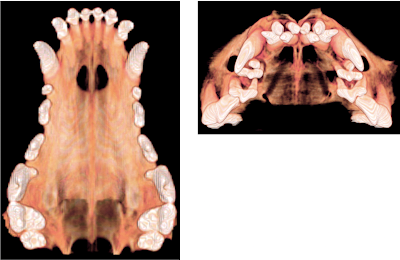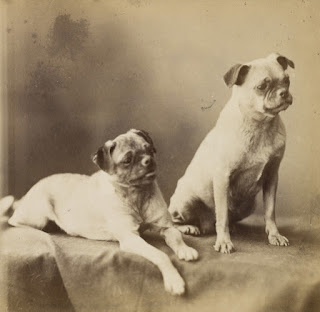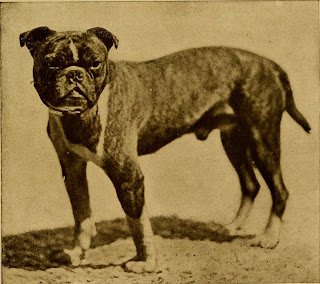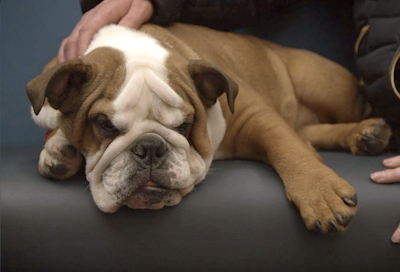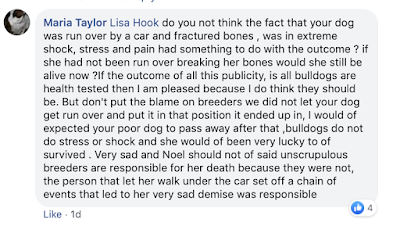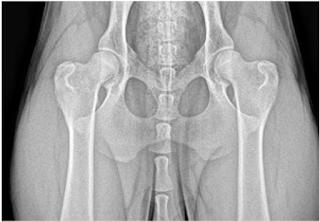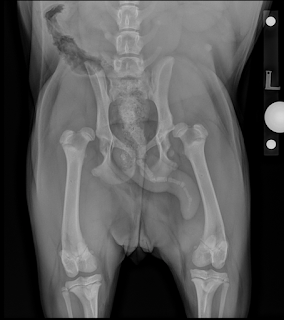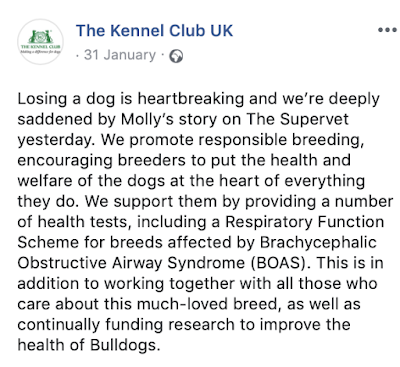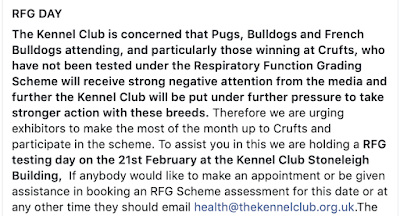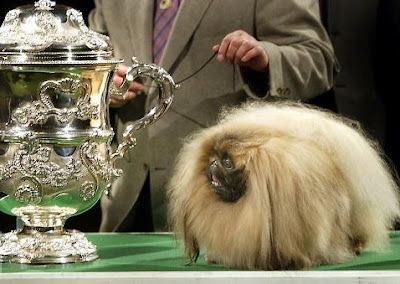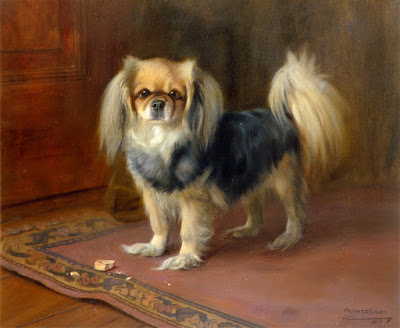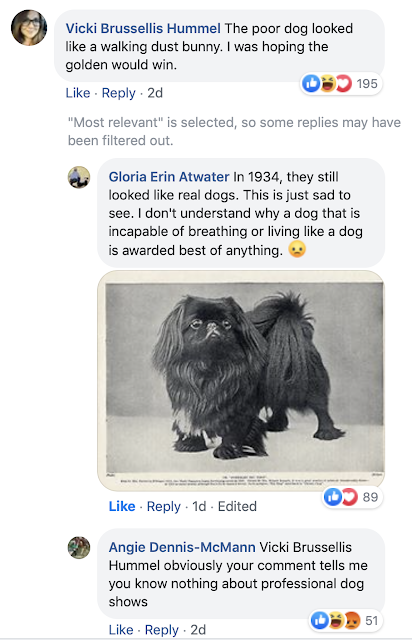Millions of viewers tuned in to the hit Channel 4 show
The Supervet on 30th January - and many wept when five month-old Bulldog puppy, Molly, was put to sleep. Molly had been rushed to Fitzpatrick Referrals in Surrey because she had been hit by a car. But it wasn't the accident that led to her death, it was what orthopaedic specialist Professor Noel Fitzpatrick referred to as "unscrupulous" breeding.
Molly had a fractured leg that needed surgery - but this was fixable. The problem was that scans revealed Molly was also suffering from crippling underlying genetic issues - including severe hip dysplasia and a trachea (windpipe) the size of a small cat's - just 5mm in diameter (it should have been at least twice that). Both conditions are life-limiting.
Fitzpatrick - criticised by some for being too gung-ho so hardly a stranger to taking a chance on a dog - advised Molly's owners that euthanasia was probably the kindest option. Her distraught owners agreed.
Initially, Bulldog breeders on social media showed sympathy to grieving owner Lisa Hook. But, last week, some turned on her. The reason? Miss Hook began asking questions about Molly's breeding.
It turns out that Molly doesn't come from a puppy farm or backyard breeder. She comes from a long line of show dogs - supposedly the
creme de la creme. There will even be several close Molly relatives being shown at Crufts next month. But, as is the case with most Bulldog breeding in the UK, neither of her parents have been tested for hip dysplasia or respiratory issues, despite both problems being endemic in the breed.
When Miss Hook began to get upset that neither test is mandatory in the breed she was then subject to online abuse.
Kennel Club show-breeder and judge Maria Taylor (
Hillplace Showdogs) posted this.
Another called her a fraud, suggesting there were puppet-masters behind the scenes pushing her to ask award questions.
There was then a heated online exchange with the Lampens, who bred Molly's sire. First, the Lampens accused Miss Hook of negligence in allowing her dog to be run over. They then called her "stupid" and "a liar" - and then claimed they weren't the owner of the stud dog, despite their name clearly being on show results for the dog in 2017. (In fact, their name is also on Molly's vaccination certificate so they were clearly closely involved with the litter.) When Miss Hook persisted on asking why no health-testing had been done, she was told to "f...off".
"The bullying has left me confused and intimidated" says a shocked Miss Hook. "I will never buy another Bulldog. It is obvious that want to shout down anyone that is trying to find out the truth in order to protect their friends but more importantly their pockets."
Some of the online trolls even suggested that it was impossible to judge hips in a 20-week-old puppy and that Molly should not have been PTS. But I can exclusively reveal the extent of Molly's hip dysplasia, something that wasn't shown on Channel 4.
Here, first, is an x-ray of a dog with excellent hips - note how the ball-joint (femoral head) fits snugly in the cup-shaped socket (acetabulum).
For contrast, here's a dog with severe hip dysplasia - note the uneven shape of the socket and how the ball joint is not sitting tightly in it.
And here are Molly's hips.
There is a lot wrong here. Significantly, you can see that the socket is severely malformed and the femoral heads are a country-mile from where they should be. This is not something that is ever going to improve. Last week, it was claimed on the Bulldog groups that Molly was "running around woods" the morning of the accident, but Miss Hook says this is simply not true.
"She used to fall over a lot and we sometimes noticed her back legs giving way. She could only walk for two minutes or so before stopping and refusing to walk. We used to carry her a lot."
Molly's breathing was also bad. "She was very noisy when walking and you could hear her even when she was lying still. She made a lot of snuffling noises."
But Molly was Miss Hook's first Bulldog and she put it down to Molly being a puppy. After all, when she had taken Molly to her vet for her second vaccination, they checked her over but had not highlighted any concerns.
Molly cost £1400 and was bred by Carmel Parsons, who lives near Ashford in Kent and also breeds Bullmastiffs and Pugs, some of which have been shown. Miss Hook says that when she told Ms Parsons that Molly had died, she denied there was anything wrong with Molly and she did not believe the Supervet's diagnosis. Ms Parsons is no longer responding to Miss Hook who has also not responded to my request inviting her to comment. No response, either, from Barry and Lynn Lampen, the breeders of Molly's sire.
Molly's pedigree name is Melcassics Temptation and here is her pedigree.
 |
| Click to expand |
You'll see that some of Molly's antecedents have been tested for HUU - a condition called hyperuricosuia that is common in Bulldogs and can cause painful urinary stones which can sometimes need surgery. Even some truly shitty breeders do this DNA test - because it's cheap and enables them to claim that their dogs are "health-tested".
But only one other dog in the pedigree, Molly's grandparent on the sire-line (Ch Testwood Tom) has had
any meaningful health tests, and they were done in Belgium seven years ago. They include a fitness, eye, heart and trachea test - all great. But despite the claim, the hip test listed here is limited because it did not involve an x-ray - just a physical exam by a vet. Upshot: this does not rule out hip dysplasia. You need to x-ray to do that.
It is that likely the reason Testwood Tom has been tested is because he is a Dutch Champion and it is a requirement there in order to be able breed. Since returning to the UK, where there are no health test requirements, Testwood Tom has had no further health testing, despite the recommendation that breathing is checked every two years because BOAS (Brachycephalic Obstructed Airway Syndrome) is progressive. He has now sired 75 litters and is still being offered at stud.
That said, his owner, Pam Freeman, was happy to talk to me and said last week: "As so much has been made of this I will now make arrangements to get him tested."
So what
should Bulldog breeders be doing by way of health tests?
The day after Molly's story aired on Channel 4, the Kennel Club posted the following statement on its Facebook page:
The reality?
Despite the Bulldog being widely considered a health train wreck by most experts, the Kennel Club doesn't mandate
any health tests for the breed. The vast majority of the 10,000 Bulldogs it registered last year - even those bred under the auspices of its supposedly-elite Assured Breeder Scheme - have undergone no health-tests at all.
Instead the KC makes the following recommendations.
 |
| Clck to expand |
But the Breed Council bronze level Breed Council does not test for respiratory issues or hip dysplasia - two of the breeds' biggest problems. And although the Silver and Gold tests do test for respiratory problems, there is no requirement to x-ray hips. (See Breed Council health scheme requirements
here.)
Meanwhile, only a handful of breeders are using the Cambridge Respiratory Function Grading Scheme (RFGS) launched last year. Indeed, this is such a concern to the Kennel Club that last week it issued this appeal:
The truth is that it is more common for stud dog owners to demand that bitches are the right colour than be health-tested. Most are happy to collect the £500 or so a jump with no questions asked, even if the stud dog himself has been health-tested - just as long as they're not a non-standard colour.
Of course, it is possible that Molly's appalling hips were an unlucky one-off. But we know that hip dysplasia is inherited and we know that Bulldogs have terrible hips. In the US, where over 1000 Bulldogs have been hip-tested, the breed is ranked second worst for hip dysplasia of all the breeds (only the Pug is worse). Over 70% of them have abnormal hips. In the UK, only 30 Bulldogs have been hip-scored in the past 30 years - with a median score of 32 (awful, basically).
So
why isn't hip-screening a breed requirement? Because it requires an anaesthetic and Bulldog folk consider this too risky because of the breeds' respiratory issues. It's also why so few are checked for trachea hypoplasia too (this too requires sedation). Of course most Bulldogs are born via C-section and an anaesthetic is needed for that but, hey, that's
different.
It doesn't help that many Bulldog breeders buy into the myth that Bulldog hips are different. Have a look at this.
It's bollocks, obviously.
It has taken continued pressure by vets, welfare experts and campaigners to get where we are today in Bulldogs. We do now have some health schemes from nothing at all a few years ago and I think it's important to acknowledge that there
have been some improvements.
The Bulldogs in the ring today move and breathe better than they did a few years ago and I am encouraged by the attitude of some breeders.
But endemic in the breed is a worrying climate of, at best, flannel and, at worst, intimidation being shown not just to puppy buyers who ask too many questions but to those within the breed advocating for greater health reforms. Very often, this is being driven by the politics engendered by the competitive nature of dog-showing.
The Bulldog Club Incorporated - the oldest Bulldog Club but perhaps the most forward-thinking on health - has just proposed that its members only breed from dogs that have passed the Bulldog Breed Council's Silver test as a minimum. It has caused uproar, with some threatening to resign membership of the Club.
As a result, those
who are really trying to breed healthier dogs are being let down by others and the whole thing is absolutely impossible for puppy buyers to navigate. It remains unsafe for anyone in the UK to buy a Bulldog.
The Bulldog breed is desperately in need of new and stronger leadership - and a good deal more transparency. The Bulldog Breed Council still has not published the Bulldog Health and Conservation Plan the KC recently insisted they draft. Breed health rep Lieza Handley did not acknowledge my request asking for a statement regarding the issues raised by the Molly case - or indeed any of my messages.
The Bulldog Breed Council did, eventually, release
this statement on its Facebook page.
Bottom line? Lots of fine words and it's good that the respiratory scheme might become mandatory if only for Assured breeders. But there was nothing condemning the online trolling of Molly's owner. And they seem to have forgotten to make a single mention of hip dysplasia.






